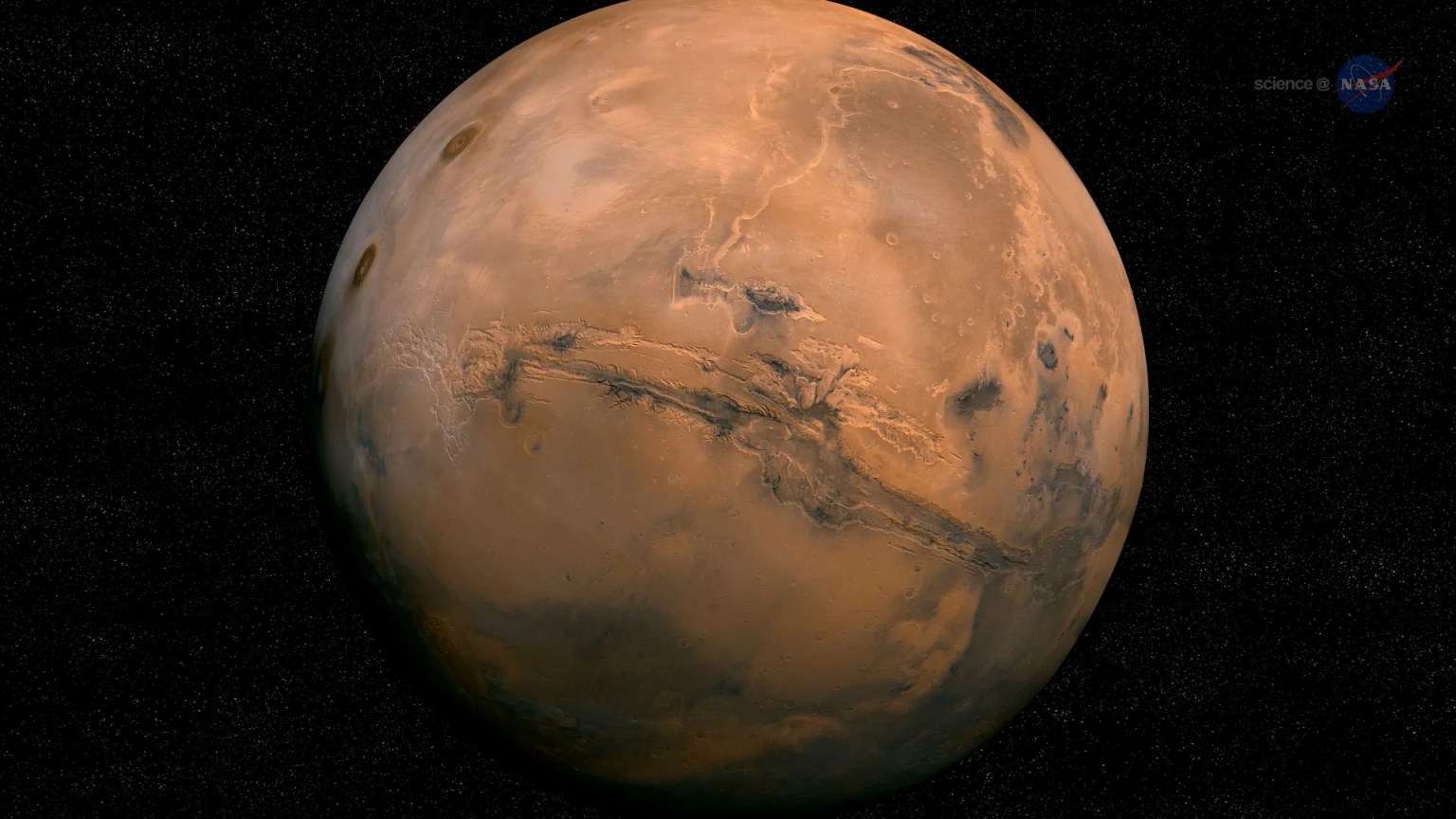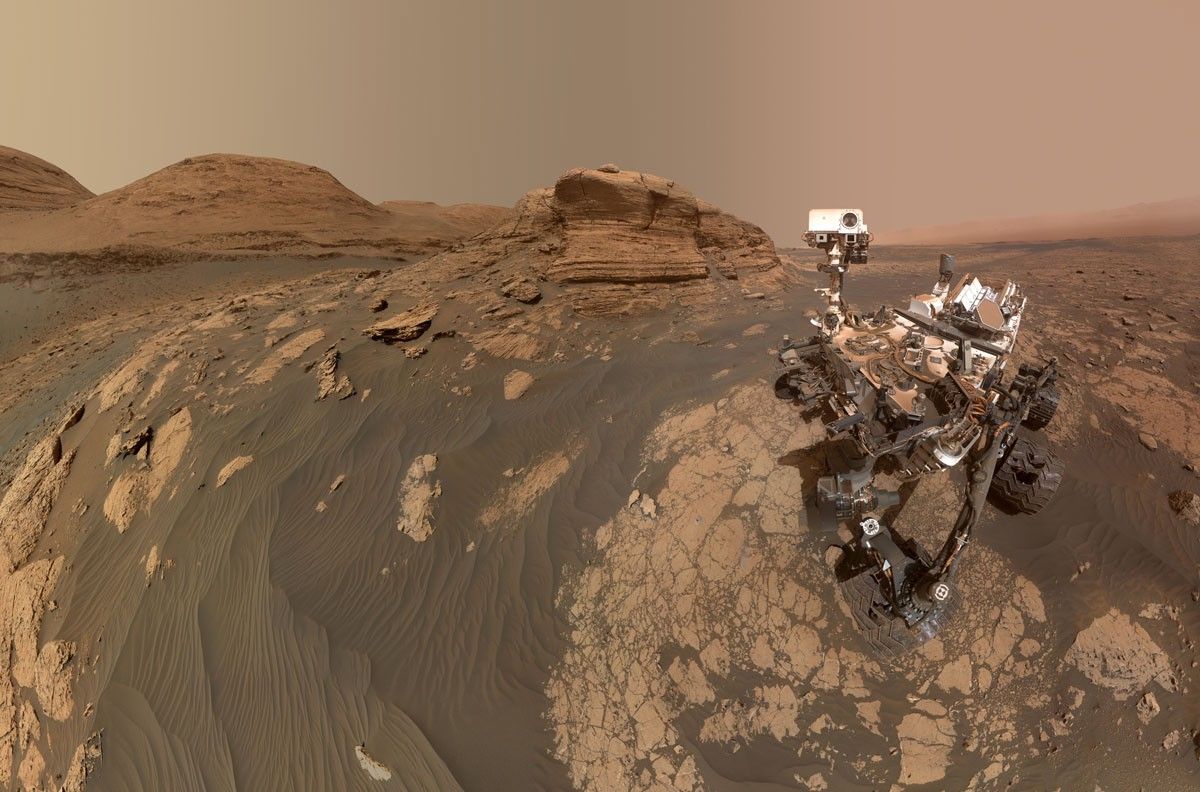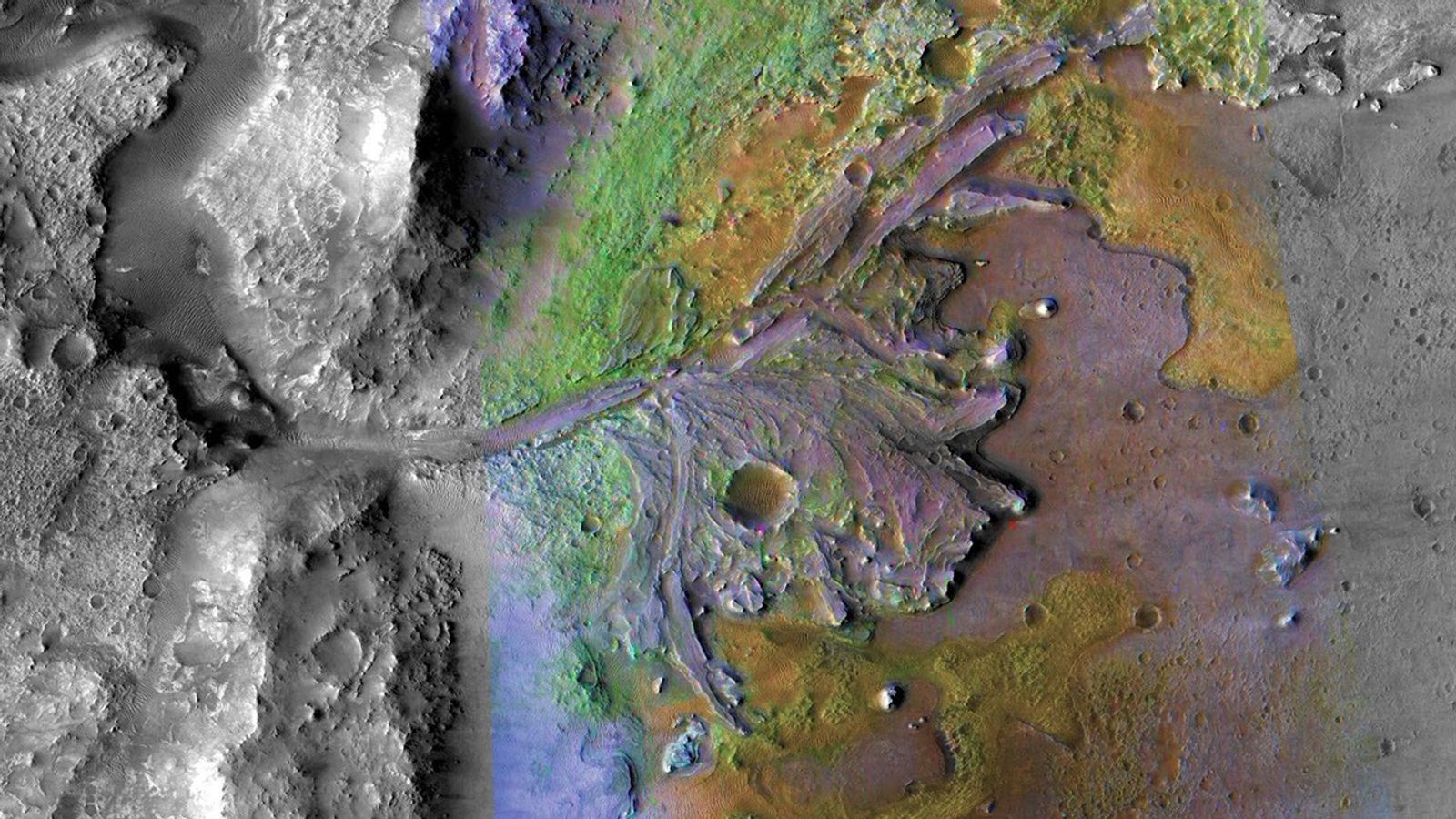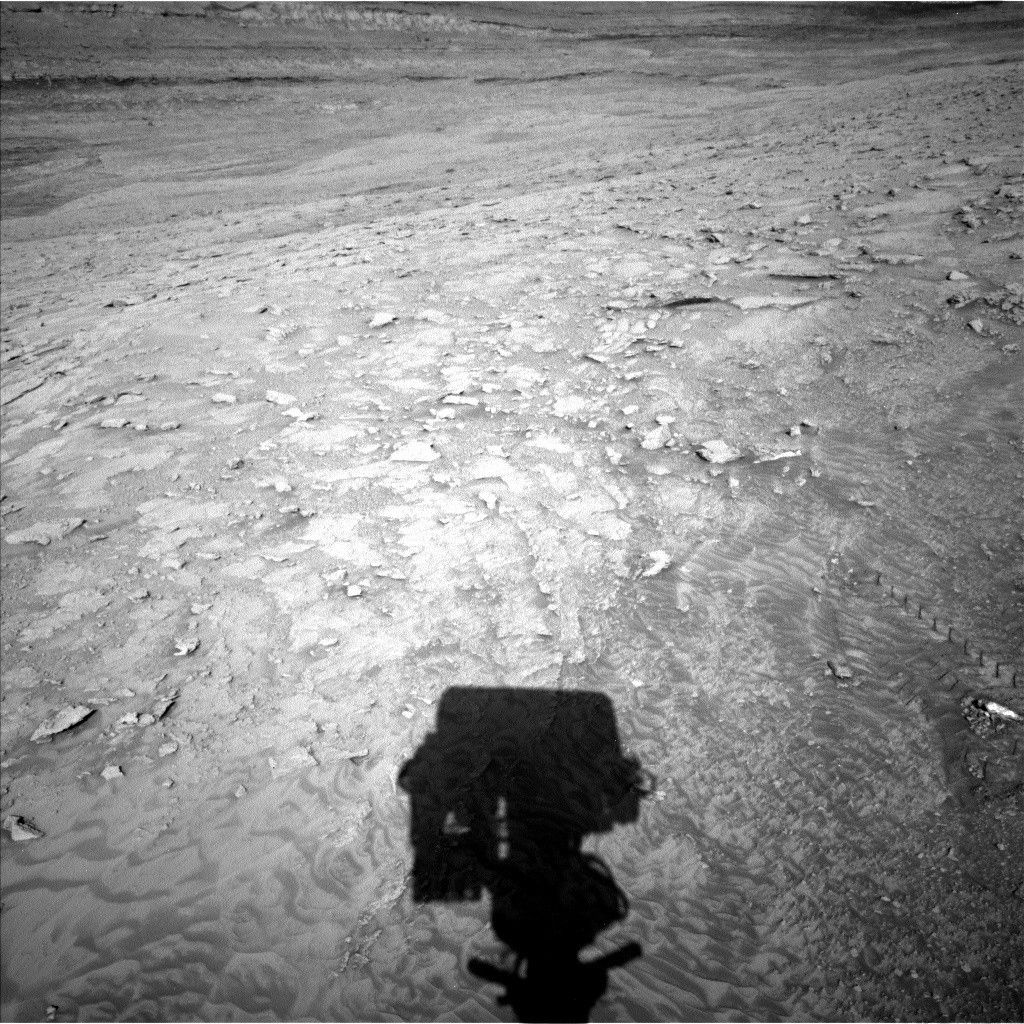2 min read
Linking Local Lithologies to a Larger Landscape
Written by Margaret Deahn, Ph.D. Student at Purdue University
NASA’s Mars 2020 rover is continuing to explore a boundary visible from orbit dividing bright, fractured outcrop from darker, smoother regolith (also known as a contact). The team has called this region “Westport,” (a fitting title, as the rover is exploring the western-most rim of Jezero), which hosts a contact between the smoother, clay-bearing “Krokodillen” unit and an outcrop of olivine-bearing boulders that converge to form a ridge on the outer Jezero crater rim. To learn more about the nature of this contact, see this blog post by Dr. Melissa Rice. Piecing together geologic events like the formation of this olivine-bearing material on Jezero’s crater rim may allow us to better understand Mars’ most ancient history.
The rover has encountered several olivine-bearing rocks while traversing the rim, but it is unclear if, and how these rocks are all connected. Jezero crater is in a region of Mars known as Northeast Syrtis, which hosts the largest contiguous exposure (more than 113,000 square kilometers, or more than 43,600 square miles) of olivine-rich material identified from orbit on Mars (about the same square mileage as the state of Ohio!). The olivine-rich materials are typically found draping over older rocks, often infilling depressions, which may provide clues to their origins. Possible origins for the olivine-rich materials in Northeast Syrtis may include (but are not limited to): (1) intrusive igneous rocks (rocks that cool from magma underground), (2) melt formed and deposited during an impact event, or (3) pyroclastic ash fall or flow from a volcanic eruption.
The Perseverance rover’s investigation of the olivine-bearing materials on the rim of Jezero crater may allow us to better constrain the history of the broader volcanic units present in the Northeast Syrtis region. Olivine-rich material in Northeast Syrtis is consistently sandwiched between older, clay-rich rock and younger, more olivine-poor material (commonly referred to as the “mafic capping” unit), and may act as an important marker for recording early alteration by water, which could help us understand early habitable environments on Mars. We see potential evidence of all of these units on Jezero crater’s rim based on orbital mapping. If the olivine-bearing rocks the Perseverance rover is encountering on the rim are related to these materials, we may be able to better constrain the age of this widespread geologic unit on Mars.
Details
Related Terms
Discover More Topics From NASA







